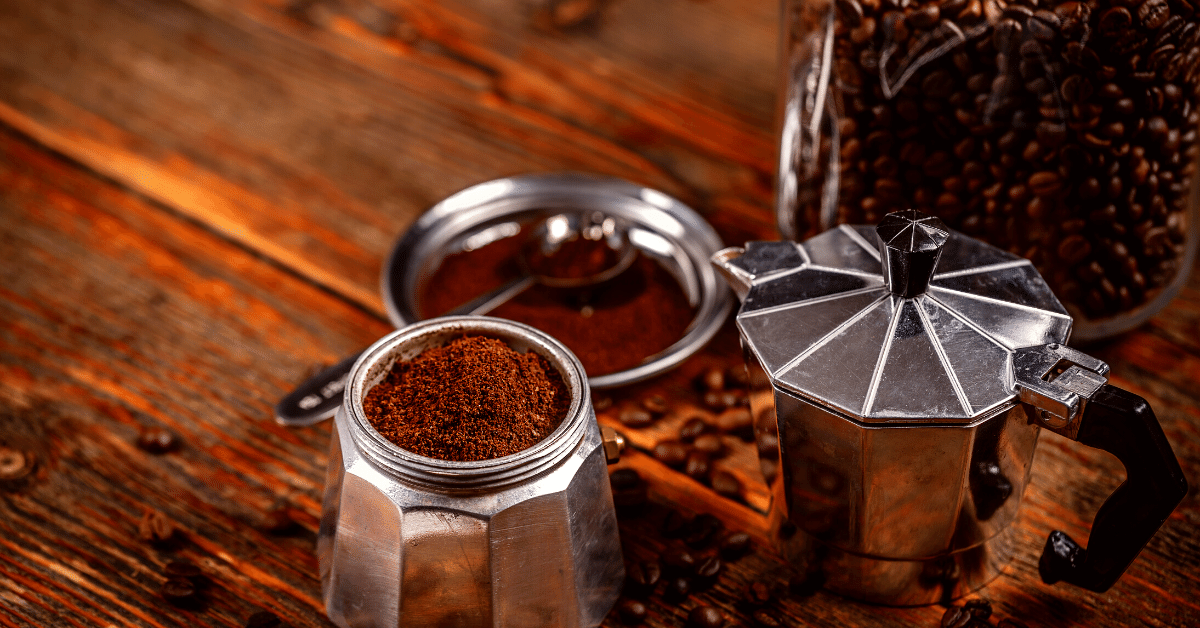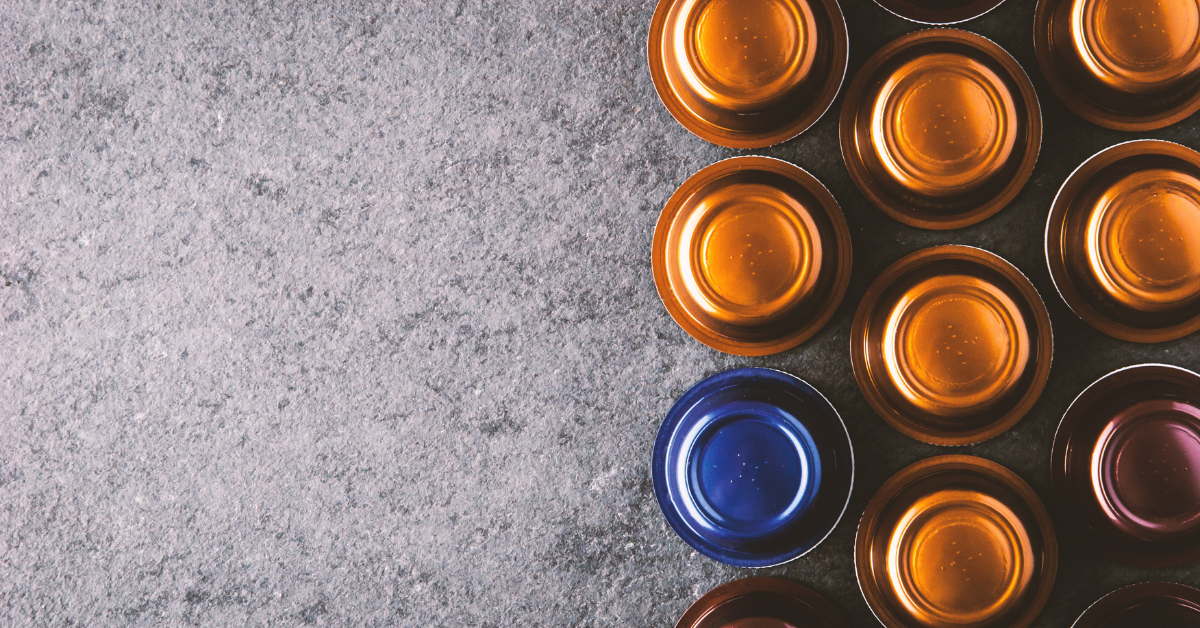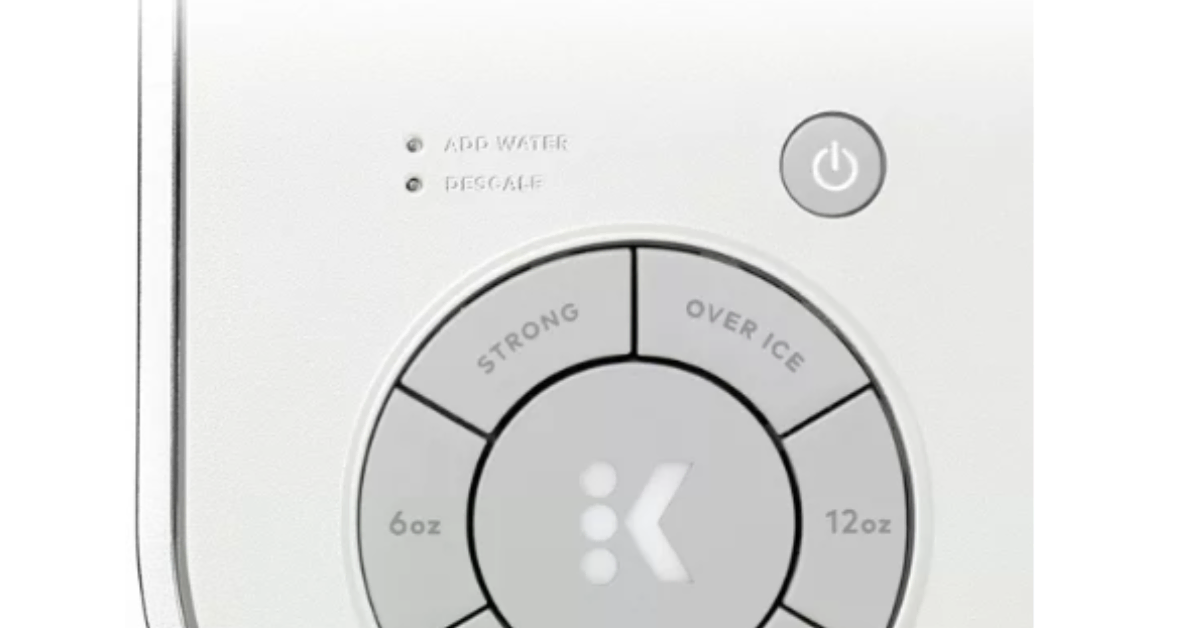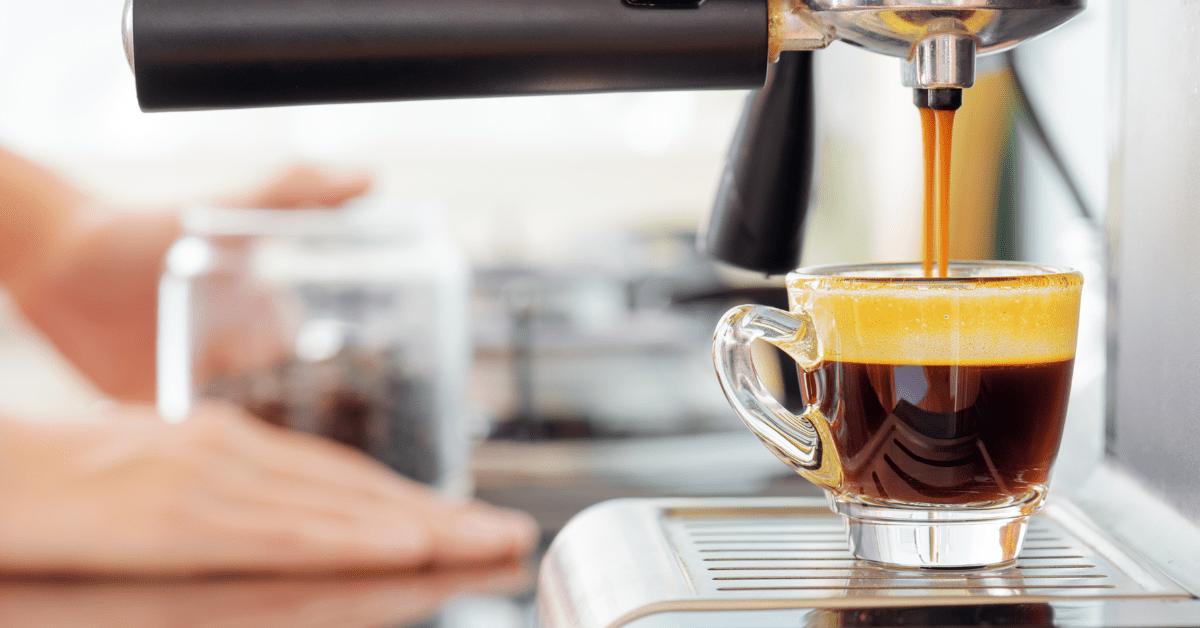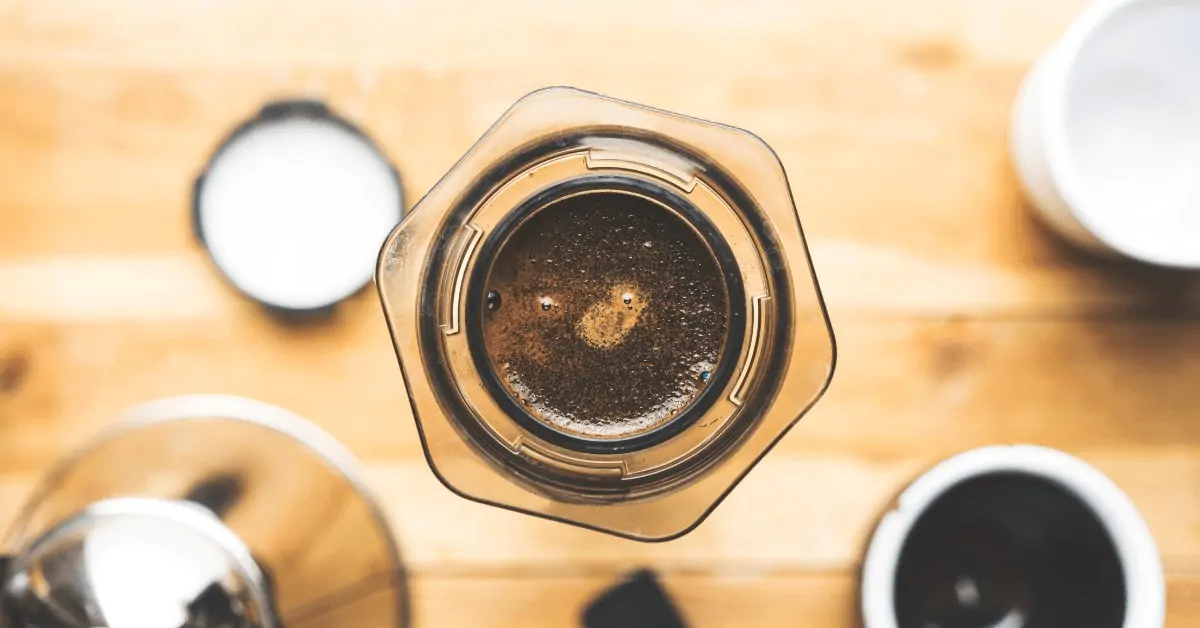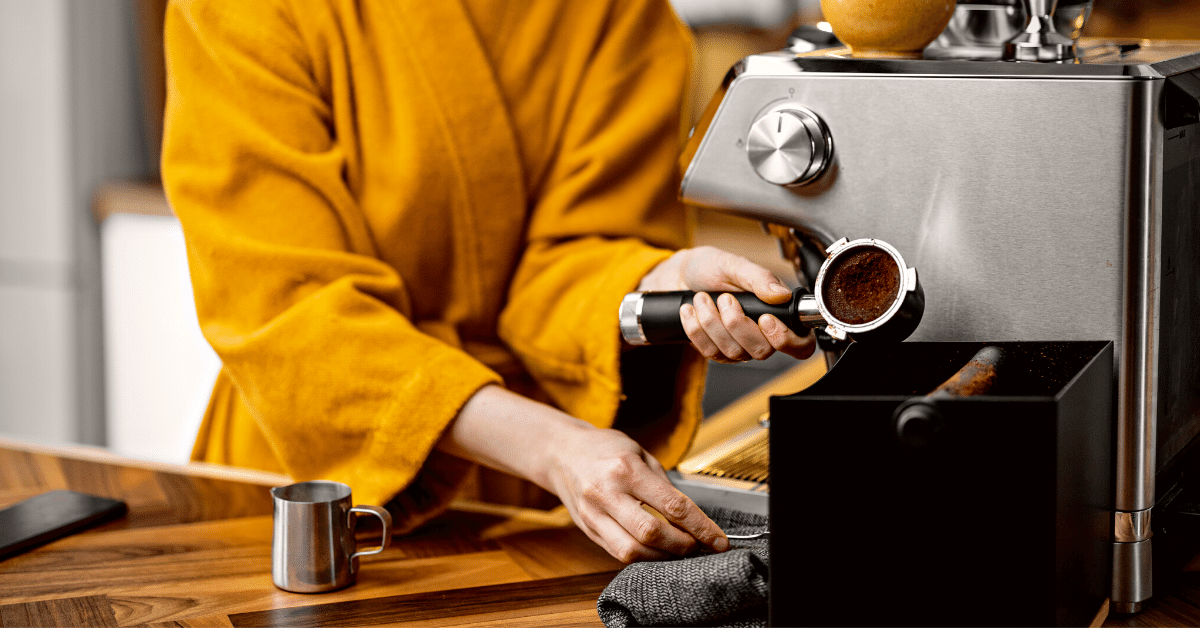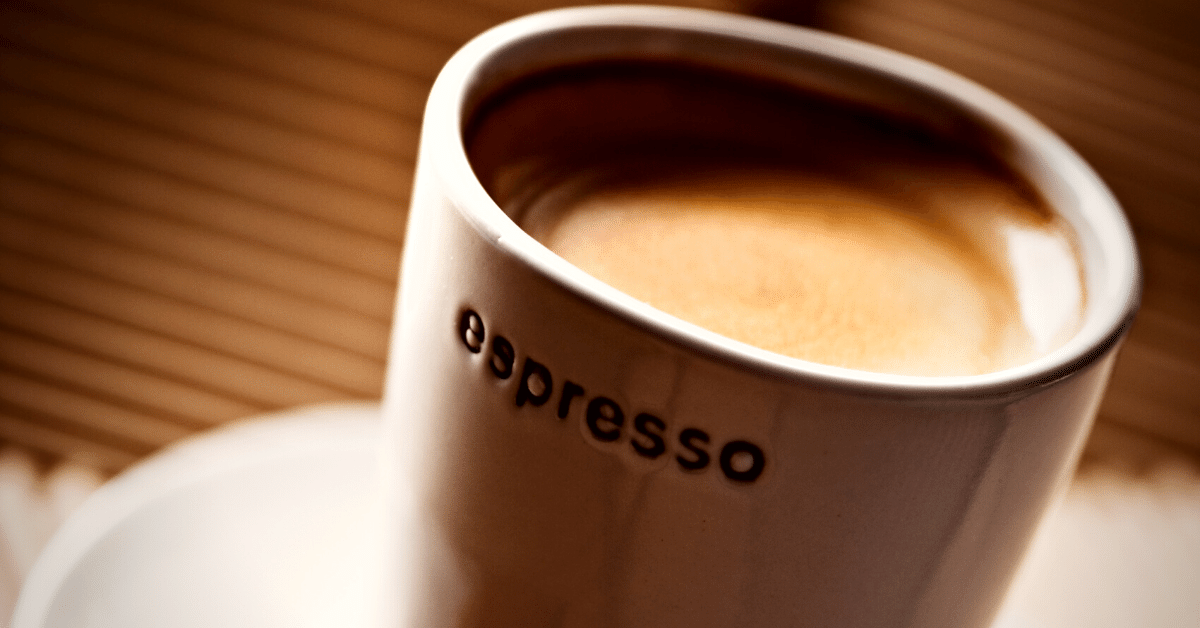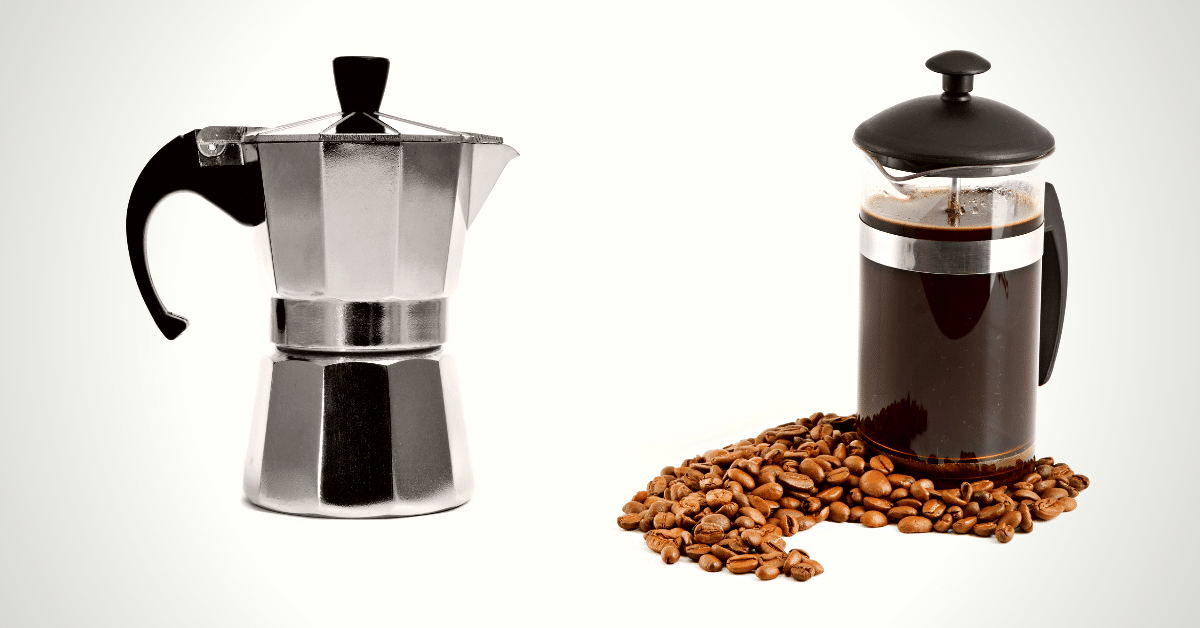Making coffee using a Moka pot from scratch?
To make a delicious cup of coffee, it’s important to use coffee grounds of the right size.
And the best Moka pot grind size is fine.
But why does it matter?
Dive in to learn more.
What’s the Best Grind Size For Moka Pot?
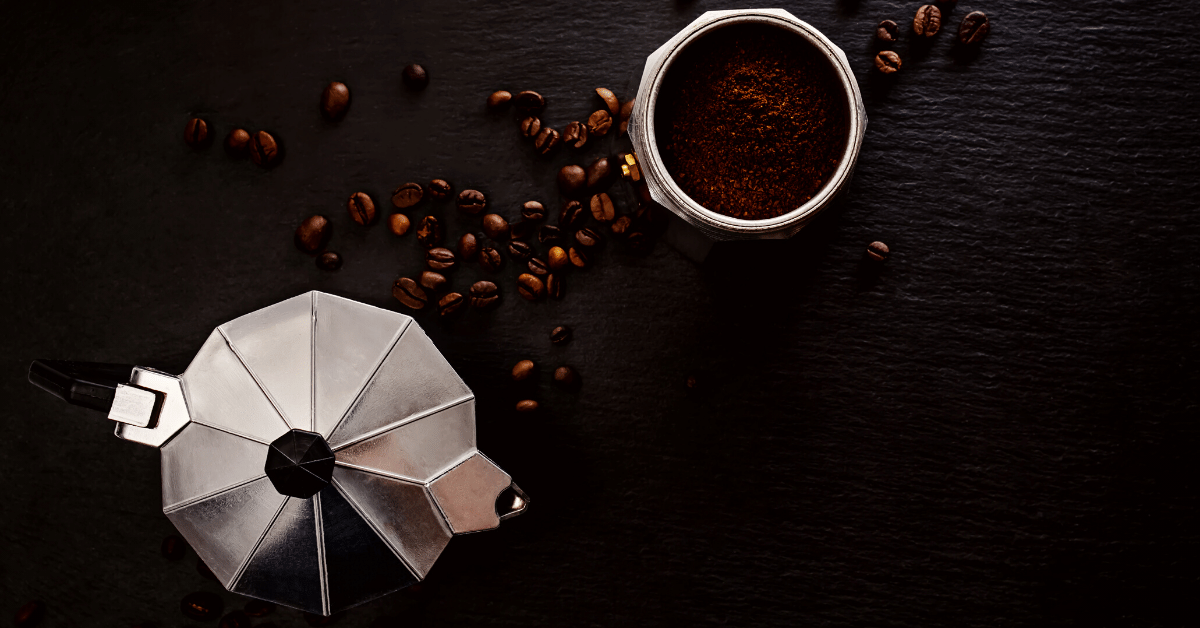
If you’ve done a fair share of brewing coffee at home, then you surely know that the grind size has a huge role in how your coffee turns out.
You see, there are a few factors that affect the “right grind size” for a specific coffee brewing method. These factors are:
- Extraction rate
- Length of contact
- Flow rate
The extraction rate basically means how fast the flavor and aroma get extracted from coffee grounds. And this factor is in an inverse relationship with the grind size.
The smaller the coffee particles are, the higher their extraction rate. In other words, it takes them much faster to extract compared to larger coffee particles.
By “length of contact,” I mean the amount of time coffee grounds are in contact with hot water. In terms of Moka pot, that’s only a few minutes.
And finally, the flow rate defines how long it takes water to pass through the grounds during the extraction process. Again, with Moka pot, that’s quite a short step, which takes less than a minute.
When you take all of these factors into consideration, we can conclude that the best Moka pot grind size is a fine grind. It should look slightly finer than sand, with particles roughly 1/32 inch in size.
A fine grind size has just the time to get extracted during the short brewing process of the Moka pot.
EXPERT TIP
If you’re buying pre-ground coffee instead, you might have a harder time finding the right grind size. Most coffee brands make a fine grind for espresso and a medium grind for filter coffee. If there isn’t a grind size in between to choose from, go with the espresso grind.
Would Other Grind Sizes Work for Moka Pot?
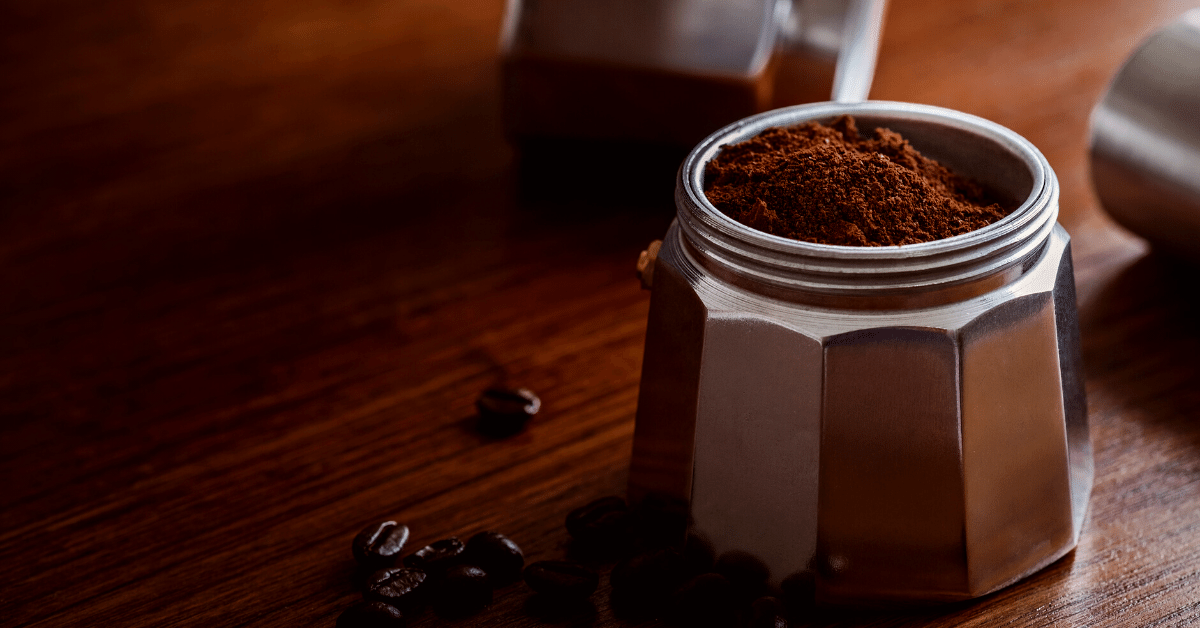
You might be wondering, would a different grind size really make that much difference?
And the answer is – yes!
The reason behind that lies in the fact that different compounds found in a coffee bean dissolve at different times.
This is the order:
- Acids
- Fats
- Oils
- Sugars
- Fibers
The first ones to dissolve are the simplest compounds, and in this case, those are fats and acids. Those are the ones that give coffee its mouthfeel and acidity, of course.
Next on the list are oils and sugars, responsible for the coffee body, sweetness, and dark brown color.
Finally, the last ones to extract are plant fibers, which cause coffee to taste earthy and bitter.
As we already established, a fine grind is best for the Moka pot brew method. It allows all the important compounds to dissolve in such a short amount of time.
What would happen if you go with a coarser grind, such as the one for cold brew coffee?
Well, a larger surface of coffee particles means the extraction will be cut off sometime mid-process. The fats and acids might dissolve, but oils, sugars, and fiber won’t. As a result, your coffee will be light and acidic, without much body.
If you choose a coffee grind size that’s too fine, like the one for Turkish coffee, you’ll achieve the complete opposite. With such a small particle surface, coffee grounds will get overly extracted. And what you’ll end up with is a burnt and bitter cup of java.
What’s more, a grind size that’s too fine can get packed, causing water to run unevenly through the grounds.
Achieving the Moka Pot Grind Size with Different Grinders
Whichever type of coffee grinder you might own, there are different coffee grind size options to choose from.
The simplest ones will have no more than four settings, while fancy models might have as many as 40.
In this section, we’ll go over different types of coffee grinders and how to use them.
Blade Grinder
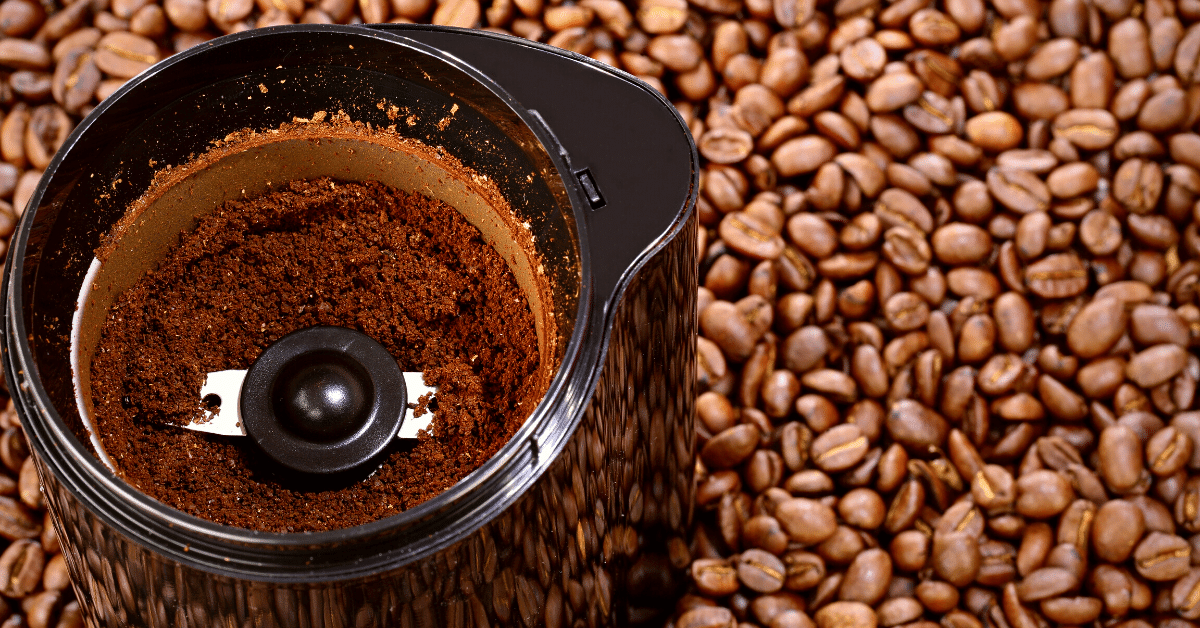
A blade grinder is the simplest tool you can use to grind coffee. It’s affordable and rather easy to use. But, it also gives you the least consistent results.
As the name suggests, this type of grinder uses blades to chop the coffee beans into smaller particles. It usually features a blade in the middle that works like a propeller – kind of like a food processor.
But when you think about it, it’s actually clear that two blades inside the chamber aren’t enough to grind coffee beans into equally-sized particles. And particles of different sizes will extract at different rates, causing your coffee to taste bad.
Additionally, blade grinders are generally made of metal, which heats up while working. Heated blades can actually cause your coffee to get burnt and bitter.
Now, I’m not saying that a blade grinder is a disastrous option. If you don’t have or want to invest in a different type of coffee grinder, this one will do.
Depending on the model, you might have more or fewer size options to choose from. In any case, you can try a medium, fine, or any size in between.
Flat Burr Grinder
A flat burn grinder consists of two rings shaped like doughnuts and stacked one on top of the other. Both rings feature burrs that are facing one another, thus grinding the coffee beans into particles of equal size.
Flat burr grinders usually offer 2-digit coffee grind size options, allowing you to play with different brewing methods. Basically, each grind setting determines the distance between the two burrs, which is also the grind size you’re aiming for.
For Moka pot, you’ll probably have different size options to choose from. Go with the one that’s medium-fine to fine, with particles slightly smaller than table salt.
This genius design ensures you always get consistent results. But, of course, it comes at a price. Flat burr grinders are more expensive than blade grinders, with price tags at par with mid-range espresso makers.
What’s more, flat burr grinders tend to be quite noisy. You can bet it will wake your whole household when you decide to grind fresh coffee in the morning. That’s one of the main reasons you don’t commonly see flat burr grinders in coffee shops.
Another reason is that they can heat up. Since they require more mechanical power than other types of grinders, they will start heating up when used throughout the day. Of course, this won’t happen when you grind your coffee no more than a few times per day.
But nevertheless, a flat burr grinder is definitely a worthy investment. When it comes to precision, this is definitely the grinder to go.
Conical Burr Grinder
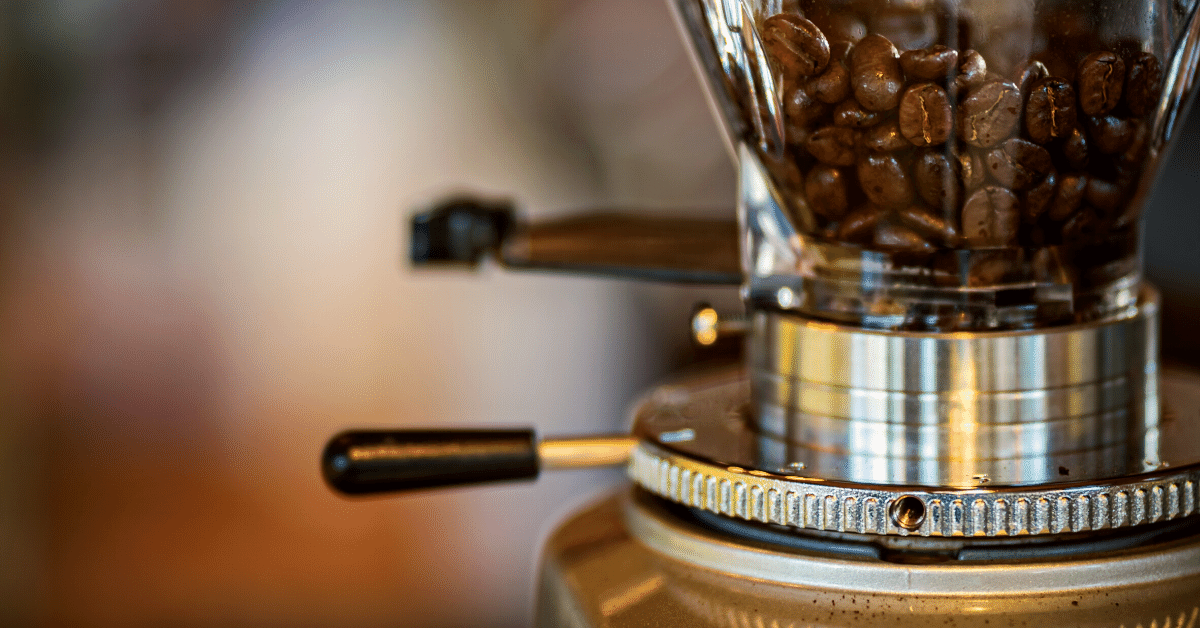
With a conical burr grinder, the two burrs sit one inside another. The larger one is a circular ring with teeth, while the inner one is shaped like a cone. The grinding thus happens vertically.
Most mid and upper-end coffee makers with built-in grinders usually feature a conical one. It gives pretty consistent results but doesn’t cost an arm and a leg. A conical burr is also relatively quiet compared to its flat burr counterpart.
Now, I’m not saying there’s no difference in results between the flat and conical burr grinder. With the former, every single coffee particle will be pretty much the same in size.
With a conical one, however, you might notice they aren’t as equal. But you won’t actually notice much difference in a cup.
Depending on the model, your grinder might have anywhere between 4 and 40 grind sizes. Naturally, the more options you have, the more you can tweak your drink. But for the Moka pot coffee maker, the fine or medium fine grind sizes are the ones you should try first.
FAQ
Is there anything else related to Moka pot coffee you’re on the fence about? Let’s solve all your doubts. Here’s a quick FAQ with related topics.
Should you tamp a Moka pot?
You should never tamp coffee grounds in a Moka pot. Doing so can cause them to clump together, preventing them from extracting properly. Instead, just add grounds into the glitter basket and create an even coffee bed with your finger without pushing down.
Can you reuse coffee grounds in a Moka pot?
While you technically can reuse the coffee ground in a Moka pot coffee maker, that’s not something that’s recommended. You probably extracted all the flavor compounds the first time you brewed coffee, so there’s very little to end up in your cup the second time.
Does a finer grind make stronger coffee?
A fine ground doesn’t necessarily mean a stronger cup of coffee per se. But because the particles are so small in size, they’ll extract rather fast, causing your coffee to taste bold and bitter.
To Sum Things Up
The best grind size for a Moka pot is a fine grind, with coffee particles the size of sand.
This grind is small enough to extract at such a fast rate, yet large enough so that coffee grounds don’t clog down the Moka pot.
Of course, you can always experiment with different coffee grind settings. But keep in mind that your cup of coffee won’t taste great if you go with a too fine or extra coarse grind.
Want to make an outstanding cup of coffee with a Moka pot? Check our step-by-step instructions on how to achieve that!

